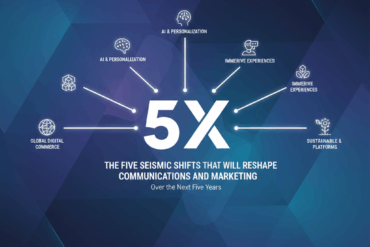By Maria Ross
Empathetic Brands Start From the Inside Out. Here Are Three Ways to Break Down the Silos Between EX and CX.
Customer experience is everything. This is a mantra most business leaders have rallied behind by now. From initial brand awareness to personalized post-purchase support, organizations have grown increasingly intentional about making customers feel seen, heard, and valued through every interaction with their brands.
In rushing to improve customer experience (CX), many may overlook another fundamental truth: Employee experience (EX) is also vital to shaping customer outcomes. So what happens when customer experience efforts aren’t mirrored internally, and employees aren’t extended the same care and attention they’re expected to give?
A 2024 PwC report found that 82% of U.S. and 74% of non-U.S. customers want more human interaction in their brand experiences. But according to the 2024 Gallup State of the Global Workplace report, only 21% of employees globally felt engaged at work. By 2025, this decline in engagement was found to be among the top 7 workplace challenges, costing the global economy an estimated $8.8 trillion in lost productivity and poor management.
A recent Quantitative Marketing and Economics study further confirms this by finding a direct, causal link between employee engagement and customer satisfaction.
In other words: while consumer-first strategies are undoubtedly important, when they’re implemented at the expense of employee wellbeing, they backfire in costly ways.
Employees are the ones who deliver the human experience customers want. When they feel unheard and unseen, disengaged, and burned out, they can’t extend that care to customers. As one World Economic Forum article notes, empathy is one of the most critical leadership skills for the future of work, and more importantly, a key driver of innovation and employee engagement. And in an economy where both customers and employees demand meaningful engagement, empathy must flow in both directions.
To create an authentically empathetic brand, leaders can’t treat CX and EX as separate silos. Instead, they must acknowledge that one flows into the other, and align internal culture with the external promise. Here are three places to begin breaking down those silos:
Listen Like a Leader, Not Just a Manager
Many organizations typically collect customer feedback through surveys, support tickets, or NPS scores. But what about doing this internally too? According to the Center for Creative Leadership, empathetic leaders outperform in collaboration and innovation because they listen deeply and respond thoughtfully. And when employees feel safe enough to share challenges, ideas, or concerns, companies gain insight into what’s really working (or not).
In her conflict resolution framework on The Empathy Edge podcast, organizational development professional and CEO of Seattle Conflict Resolution Kristine Scott outlines three simple but powerful steps for managers navigating tough conversations: validate the emotion, state the boundary, and offer support or options. This can also mean creating intentional moments where employees feel safe to speak and confident they’ll be heard. It means investing in employee check-ins, feedback loops, and listening sessions as strategic tools, not just HR nice-to-haves. And as this Harvard Business Review article reminds us, listening well is not only a first step to aligning employee needs with business goals, it’s a teachable, trackable leadership skill that every leader can access.
Equip Managers to Model Empathy
Internal culture isn’t as shaped by C-Suite memos as it is by those everyday interactions employees have with managers. Yet they’re often undertrained, overburdened, and most overlooked when it comes to empathy training. According to Harvard’s Professional & Executive Development platform, teaching managers reflective listening, empathetic communication, and psychological safety techniques helps address burnout, distrust, and disengagement among teams.
And as MIT Sloan Management Review puts it, empathy within teams turns warm hearts into cold hard results. But it still needs systemic support, because while training leaders to be more empathetic is necessary, organizational structures must reinforce it. When empathy exists only in pockets but is not supported by the environment, that’s like planting healthy seeds in nutrition less soil and still expecting an abundant crop.
Align Policies with People, Not Just Profit
When leaders ask whether organizational policies honour their people, it might mean rethinking rigid schedules, performance metrics, or communication norms. It also means considering the mental, emotional, and psychological toll of customer-facing roles. A 2024 Current Psychology study found that emotional exhaustion in these roles has a mediating impact on employee turnover intention. But when employees know that the company has their back, not just during peak performance, but during hard seasons too, they’re more likely to stick around and go the extra mile.
Here’s the bottom line: Empathetic organizations don’t begin with clever ad campaigns. They begin at the Monday morning meeting, with leaders who listen, managers who care, and internal systems that reflect both values and humanity. For loyalty from our revenue-driving customers, we must first invest internally in empathy for our employees and understand how employee experience impacts customer experience.
Feature image credit: Getty

